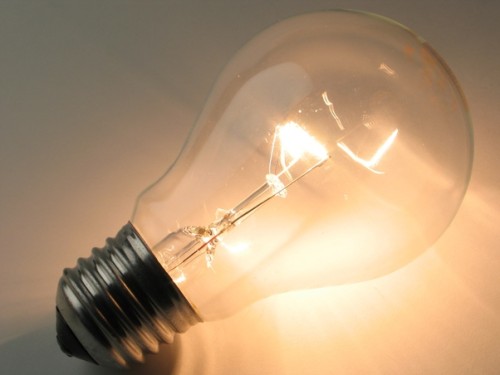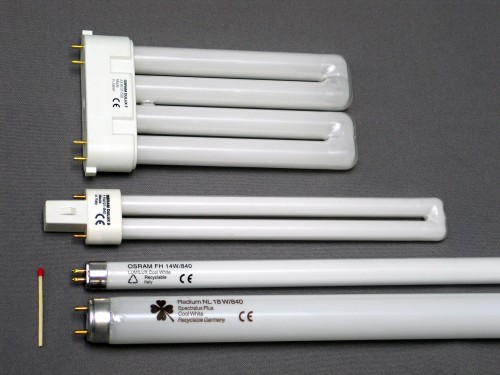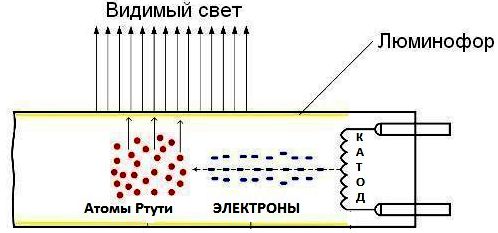Today on the market there is a lamp of various types and cost. Each of them has its own technological and consumer characteristics, advantages and disadvantages. Luminescent lamps are considered the most popular today. Consider this topic in more detail.
Content
Varieties of lamps
The following types of lamps are distinguished:
- Incandescent devices
- Halogen.
- LED.
- Luminescent.
Consider a little more than each of them.
Incandescent devices
For a long time, these lamps did not have worthy competitors. Today, of course, the situation is already different. As for the shape of the products, it can be different. The same applies to power, which, depending on the type of device, ranges from 15 to 270 watts.
The incandescent lamps that are produced today are crypton or bispiral. The first uses inert gas crypton. The minimum power of these products is 400, and the maximum 100 watts. Unlike ordinary lamps, they have a large light output.
A considerable light of the bispiral lamps, which give streams of light due to the inflame of a complex arcuate tungsten thread, is also a considerable light.
Incandescent lamps, regardless of their type, can have a different surface. It is transparent, matte or mirror.
Halogen lamps
They give beautiful saturated shades, due to which they are often used in the design of interiors in ethno-style. Products can have a different shape. These lamps are used not only for general lighting, but also for illuminating individual sections.
There are several types of such lamps:
- Wall.
- Suspended.
- Pointed.
- Built -in.
- Turned.
- Fixed.
LED lamps
The advantages of these lamps include:
- Low power consumption.
- Relatively low cost.
- High light output.
- Long service life.
There are options for products that are not required for operation of electrical wiring. They function on batteries or solar batteries. These lamps can operate at a temperature of -30 to +50 degrees.
Luminescent lamps
These products have recently become more and more popular. They give soft and scattered light. The power of fluorescent lamps can be from 8 to 80 watts. They function due to the effects of ultraviolet radiation of the gas discharge on the phosphor. Such products require less electricity to work, due to which they can save. Models of devices that are suitable for the usual E14 and E27 cartridges are widely used to light private and apartment buildings. Thanks to the availability and popularity of the Luminescent lamp, buying today is not difficult.
If you compare the incandescent device and the fluorescent lamp of the same power, then the last light flux will be 7-8 times larger. In addition, such products can last much longer. Of the shortcomings, it should be noted that such devices are sensitive to temperature differences, and they can sometimes flicker.
Types of fluorescent lamps
Only seven types of fluorescent lamps differs:
- Natural light with improved color rendering (Lets).
- Daylight with improved color rendering 1 (LDC).
- Cold natural light (LHB).
- Cold white (LHB).
- Warm white (LTB).
- Daylight (ld).
- White (LB).
Each of them differs in the phonophore used by the brand.
In shape, they can be:
- straight
- in the form of a ring.
Direct lamps are gas discharge. The pressure of such devices is very low. They consist of a glass tube (cones) and two basements with contacts. In addition, there are a couple of cathodes made of tungsten thread or steel tube. The lamp cavity is filled with mercury vapors and inert gas. The light output directly affects the length of the tube. Such lamps are installed in public transport premises and residential buildings.
Devices in the form of a ring can be used in almost any room. Thanks to the small dimensions of the tube, this lamp is convenient to use in lamps of a flat shape. Quality and durability are the main characteristics of fluorescent lamps. The price of such lighting devices is usually acceptable. Most often they are used to light a large area.
Characteristics of fluorescent lamps
Of the advantages of these lamps, the following should be noted:
- The temperature of the flask is not as hot as that of incandescent lamps.
- Resistant to small voltage drops.
- The long service life, which is much more than that of incandescent devices.
- Large color range. Allows them to be used in almost any room.
- These lamps provide the same stream of light, but at the same time they spend almost four times less electricity than incandescent devices.
Their main disadvantages are the following facts:
- Bad work at a temperature of a fluorescent lamp 0 and below.
- When high temperatures are reached, the flow of light decreases.
- The flask contains approximately 40-60 millimeters of mercury. Therefore, constant staying in a room with such devices can harm health.
- There are energy -saving fluorescent devices. The principle of their work is similar to ordinary fluorescent lamps. Only they have a much smaller area of \u200b\u200bthe flask.
Compared to incandescent lamps, they have several advantages:
- They require 80% less electricity with the same amount of light.
- It is possible to choose the color of the glow.
- Cash saves occurs at the expense of a longer service life.
- Long service life. Its exact value depends on the type of lamp.
Scheme and work order
First of all, I must say that it is more correct to call it not a lamp, but an electrical appliance, which consists of the following components:
- Lamp.
- Starter.
- Throttle.
In order for the discharge to form in the device, only 220 volts are not enough. The fact is that there is gas inside the flask that is not an electric conductor. For the occurrence of a charge, it is necessary that ionization of this gas occur. For this purpose, the starter is just intended. It is he who in a couple of seconds heats the electrodes located in different parts of the lamp. When the electrode is heated, part of the electrons flies off the surface from the surface. Then, due to the presence of electric fields, electrons move in the direction opposite to the electrode. Moreover, they periodically fall into the atoms of the gas.
As a result, gas is ionized, which leads to an increase in the number of free charges inside the lamp. At this moment, an electric loader appears in the flask. As a result, the collision of electrons with mercury atoms causes an ultraviolet glow, which is not visible to our eye. Then it is converted to visible light by a phosphorus with other particles applied to the inner surface of the phosphorus (a mixture of phosphorus with other particles). After the emergence of an electric discharge, the created electric loading is capable of, as a rule, independently maintain the necessary level of ionization. Therefore, the heating of the electrodes is no longer required for this.
Connection scheme using EMPRA
Luminescent lamp scheme:
The electromagnetic start -uping device or Empra is often called just a throttle. This scheme was actively used to connect fluorescent devices back in Soviet times. It is important that the power of this circuit corresponds to the total power connected to it lamps.
The principle of operation is as follows. When the power supply is turned on in the starter, an electric load occurs. At the same time, bimetallic electrodes are accurately closed. As a result of this, a current is formed in the starter and electrodes circuit, which is limited only by the internal resistance of the throttle. Due to which the voltage in the working lamp increases three times. The electrodes are almost instantly warm up. At the same time, the starter bimetallic contacts are cooled and the circuit opens. With the help of arising self -induction, the throttle launches a special high -voltage impulse. As a result, there is a discharge in a gas environment, which leads to ignition of the lamp. Further, the voltage is no longer enough to re -open the electrodes of the starter. Therefore, while the lamp is on, the starter with open contacts will be inactive in the work.
Connection diagram using eopra
The electronic start-uping device or an Epra supplies a voltage different from the network frequency, namely a high-frequency current with a value of 25-125 kHz. This avoids flashing lamps, which can be unpleasant for the eyes of a person. Here, an auto -generating scheme is used, which includes the output cascade on transistors and a transformer. Connection schemes are usually applied to the front side of the block.
Epra has several significant advantages. So, they increase the life of fluorescent devices. This is achieved thanks to a special launch mode. In the process, there is no unpleasant noise and glare. If we compare this scheme with the previous one, then it saves up to 20% of electricity. In addition, there is no starter in it, namely, it most often fails. Today there are special models that allow you to regulate the brightness of the glow and have the ability to dimming.



















